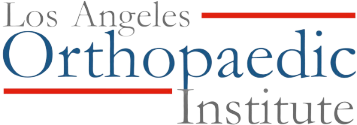Knee
Partial joint arthroplasty may be an option for people with degenerative arthritis in the knee. Our doctors also utilize robotic or computer-assisted knee replacement for more precise and accurate restoration of motion and biomechanics of the knee. LAOI doctors are constantly developing new surgical techniques in order to speed healing and preserve the patient’s own cartilage and joints.
Common knee conditions include:
- Osteoarthritis: a degenerative condition characterized by the breakdown of the cartilage that cushions the knee joint.
- Meniscus tear: a tear in the cartilage that acts as a shock absorber between the thighbone and shinbone.
- ACL (anterior cruciate ligament) tear: a tear in one of the four main ligaments that help stabilize the knee joint.
- Bursitis: inflammation of the bursa, a fluid-filled sac that acts as a cushion between tendons, muscles, and bones in the knee.
- Patellofemoral pain syndrome: pain in the front of the knee, caused by the kneecap (patella) not gliding smoothly over the thighbone (femur).
- Gout: a type of arthritis caused by a buildup of uric acid crystals in the joint.
- Rheumatoid arthritis: an autoimmune disorder that causes inflammation and damage to the joints, including the knee joint.
- Tendinitis: inflammation of the tendons that attach muscle to bone in the knee.
- Dislocated kneecap: when the kneecap is out of its normal position.
- Runner’s knee: pain around the kneecap, caused by overuse or weakness in the thigh muscles.
Total knee arthroplasty
In rare cases, the joint is totally lacking articular cartilage and total knee replacement surgery is needed. LAOI employs a pain management team to reduce the discomfort and maximize the post-operative recovery. Patients usually stay a maximum of two nights in the hospital and are discharged to begin their physical therapy and rehabilitation in the comfort of their own home.





